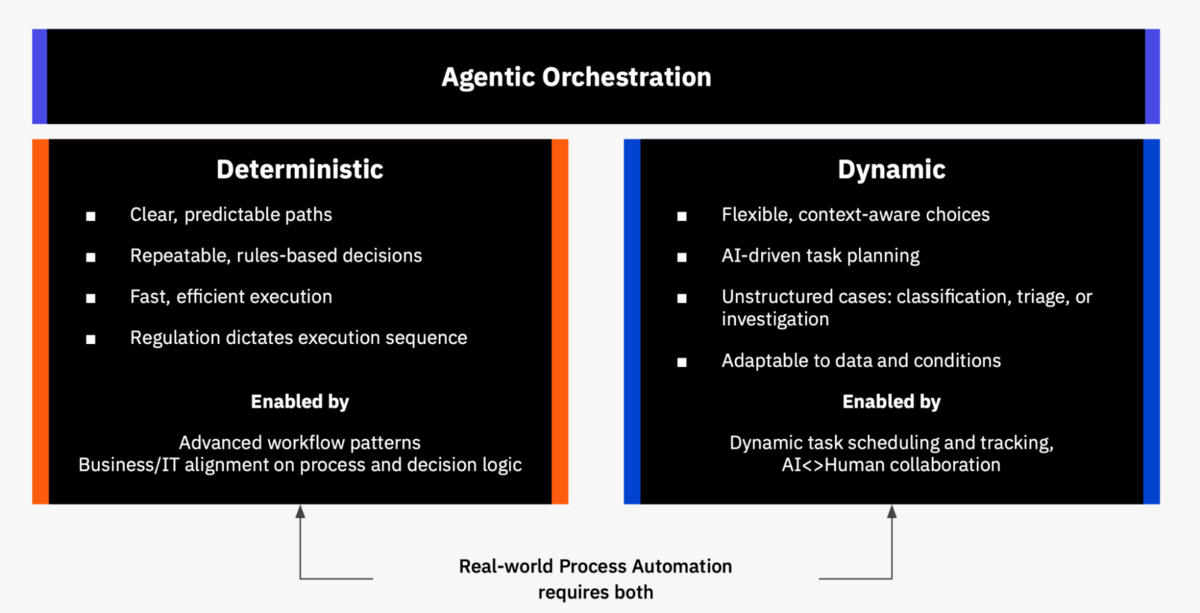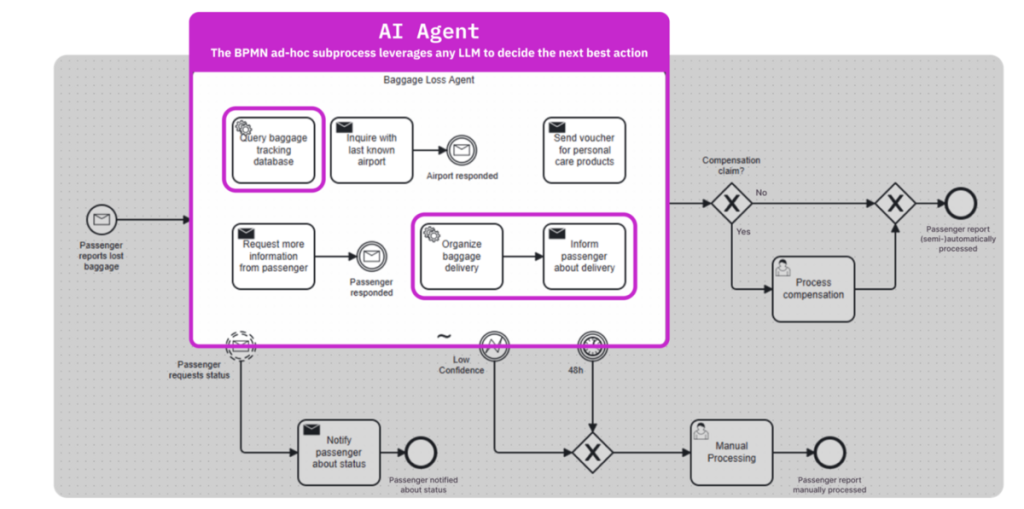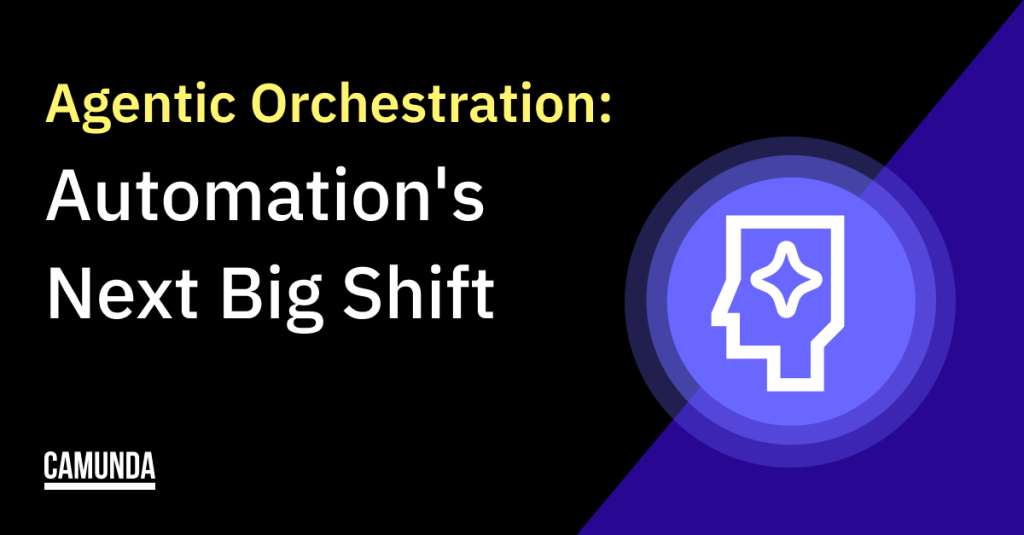Since starting Camunda, we’ve believed in one thing above all: End-to-end process orchestration is the best way to make automation work—across people, systems, and devices.
We’ve seen time and time again that task-based automation might deliver quick wins, but it doesn’t scale. The moment processes get complex, those isolated tools start pulling in different directions. The result? Broken customer experiences. Inefficient teams. A lack of visibility and an inability to improve processes.
That’s the problem we set out to solve back in 2013. And it’s the same problem we continue to solve—only now, the stakes are higher.
AI is changing everything. Nearly every conversation we’re having with customers right now touches on it. According to the 2025 State of Process Orchestration and Automation Report, 84% of organizations want to add more AI capabilities over the next three years. But 85% struggle to make AI actually work at scale.
There are a few reasons why this is happening. First, simply adding AI into an automation strategy doesn’t magically create value. Done incorrectly, it just creates another silo—and yet another layer of technical debt.
Second, traditional process automation focuses on automating around a set of predetermined rules (or deterministic orchestration). AI presents the opportunity to break those rules by executing processes dynamically.
That’s where agentic orchestration comes in.
Overcoming limitations in traditional process design
Process orchestration as we know it is deterministic, meaning you design processes and define their logic in advance. Sure, it can handle variants, but only if they’re a part of the original process model in BPMN or DMN. What we think of today as a fully automated process, or “straight through processing” (STP), usually relies on this structure.
AI agents make process automation much more dynamic. Dynamic orchestration uses AI to handle “unforeseen” tasks. It orchestrates based on defined goals and a given context, but doesn’t need specific instructions like a deterministic process.
But most business processes are somewhere in the middle. They have some STP in place, but are still using human case management to handle exceptions or tasks without a straightforward action. Agentic orchestration blends deterministic and dynamic orchestration seamlessly.
For example, most of the time, STP is done in seconds or minutes. But sometimes it fails. And when it does, people step in to investigate. It’s slow, messy, and manual. That’s where AI can help. Agentic orchestration takes over when the unexpected happens—analyzing unstructured data, spotting patterns, and suggesting actions.

Real world examples of agentic orchestration
And here’s where things get really exciting: This isn’t theoretical anymore. It’s real. It’s working. And it’s already creating serious value.
Our partner EY has built a tool for agentic trade reconciliation with Camunda. Reconciliation errors are usually handled manually. Because they are very labor intensive, they take a lot of time to review and are error-prone—resulting in a risk of fines. In fact, the world’s largest banks employ up to 25,000 people to review these exceptions. With agentic orchestration, they’re now using AI to suggest the next best action based on trade data and LLMs. That means faster resolution and T+1 compliance. But the most impressive value is in productivity: With agentic trade reconciliation, one employee can now handle far more cases per day on average, resulting in an increase in productivity of 7x.
Here’s another example: Payter, a payment terminal business for vending machines, is drowning in case management when payments fail. They have now started using Camunda to blend deterministic process logic with AI agent-driven exception handling. The expected outcome? Resolution times will drop by 50% from 24 to 12 minutes. Even better? Customer service will improve not just because of the shorter resolution time, but also because employees are now able to spend more time on complex issues.
Building the autonomous organization of the future
And the examples above are only the beginning. We’re seeing more and more companies wanting to bring more AI into their processes. In order to do that, they’re operationalizing AI in a way that’s composable, scalable, and flexible—not stuck in isolated systems. And Camunda is at the foundation of this shift. We’ve spent over a decade building a platform that does one thing exceptionally well: orchestrate complex, mission-critical processes from end to end.
Now, we’ve taken our powerful orchestration engine and infused it with embedded AI. The result? The ability to blend deterministic and dynamic orchestration in a unified agentic orchestration model—with guardrails, auditability, and control.

What does that mean in practice?
It means you can now:
- Blend structured BPMN and DMN process modeling with flexible AI agents.
- Automate what was once “un-automatable” (like complex case management).
- Inject AI into your legacy systems without a big bang transformation.
- Use low-code tools and connectors to move fast.
- Implement AI safely and reliably, with “guardrails” for full auditability and control.
We’re giving you AI-native capabilities, like:
- Ad-hoc sub-processes: Let agents decide what happens next.
- Camunda Copilot: Go from a text prompt to a running process.
- RPA and IDP: Integrated, out-of-the-box, and ready to go.
- ERP Integration: Orchestrate AI across SAP, ServiceNow and beyond.
Here’s a look into the future: AI agents that get even smarter by working alongside humans—automating more and more over time. Think AI loan specialists that are trained directly from human input.
Our long-term vision hasn’t changed
We’ve always believed in end-to-end process orchestration. What’s different now is how far we can take it. Agentic orchestration brings us closer to a world where AI and humans truly collaborate across systems, teams, and time zones. We’re designing the autonomous, AI-powered organization of the future.
If you’re thinking about bringing agents into your business—this is the moment. With Camunda, you’ve got the foundational technology and the vision to do it right.
The next chapter of automation just started. And I couldn’t be more excited.
Let’s build the future together.
Learn more
You can learn more about our agentic orchestration capabilities here, and if you want to dive deeper, be sure to watch the recording of the keynote from CamundaCon 2025 Amsterdam (available soon).


